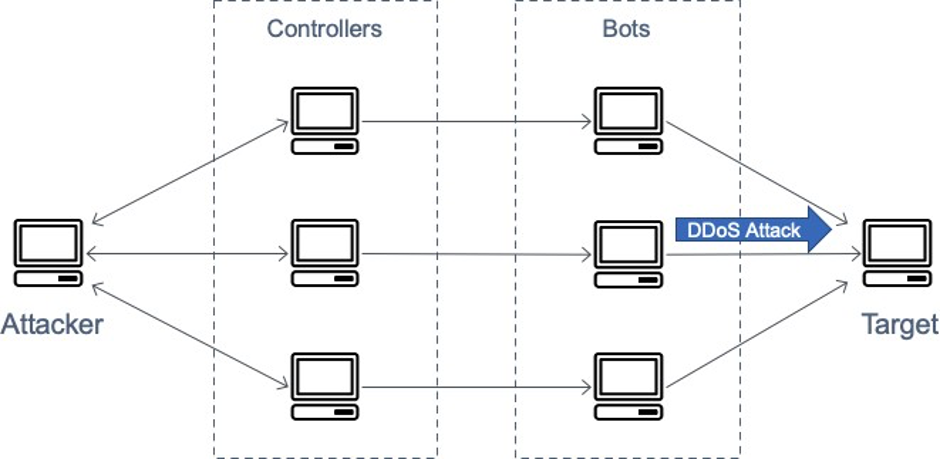This whitepaper is for historical reference only. Some content might be outdated and some links might not be available.
Introduction to denial of service attacks
A Denial of Service (DoS) attack, or event, is a deliberate attempt to make a website or application unavailable to users, such as by flooding it with network traffic. Attackers use a variety of techniques that consume large amounts of network bandwidth or tie up other system resources, disrupting access for legitimate users. In its simplest form, a lone attacker uses a single source to carry out a DoS attack against a target, as shown in the following figure.

A diagram depicting a DoS attack
In a Distributed Denial of Service (DDoS) attack, an attacker uses multiple sources to orchestrate an attack against a target. These sources can include distributed groups of malware infected computers, routers, IoT devices, and other endpoints. The following figure shows a network of compromised hosts that participate in the attack, generating a flood of packets or requests to overwhelm the target.

A diagram depicting a DDoS attack
There are seven layers in the Open Systems Interconnection (OSI) model, and they are described in the following table. DDoS attacks are most common at layers 3, 4, 6, and 7.
-
Layer 3 and 4 attacks correspond to the Network and Transport layers of the OSI model. Within this whitepaper, AWS refers to these collectively as infrastructure layer attacks.
-
Layer 6 and 7 attacks correspond to the Presentation and Application layers of the OSI model. This whitepaper addresses these together as application layer attacks.
This paper discusses these attack types in the sections that follow.
Table 1 — OSI model
| # | Layer |
Unit |
Description |
Vector examples |
|---|---|---|---|---|
| 7 | Application |
Data |
Network process to application |
HTTP floods, DNS query floods |
| 6 | Presentation |
Data |
Data representation and encryption |
Transport Layer Security (TLS) abuse |
| 5 | Session |
Data |
Interhost communication |
N/A |
| 4 | Transport |
Segments |
End-to-end connections and reliability |
Synchronize (SYN) floods |
| 3 | Network |
Packets |
Path determination and logical addressing |
User Datagram Protocol (UDP) reflection attacks |
| 2 | Data Link |
Frames |
Physical addressing |
N/A |
| 1 | Physical |
Bits |
Media, signal, and binary transmission |
N/A |